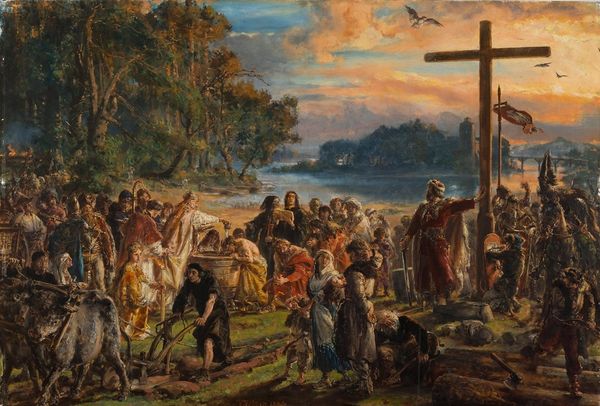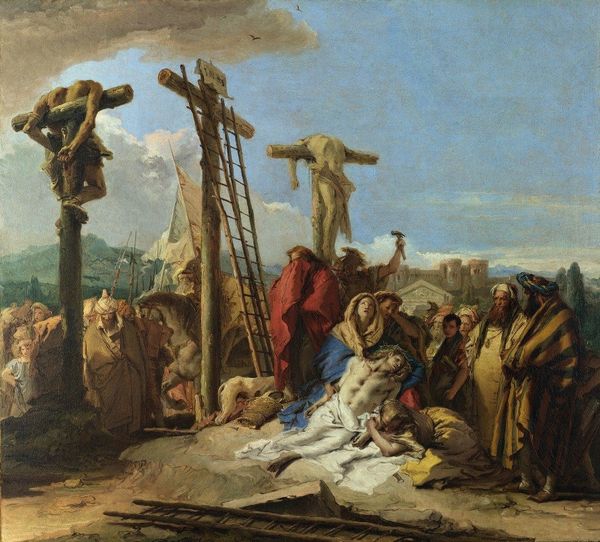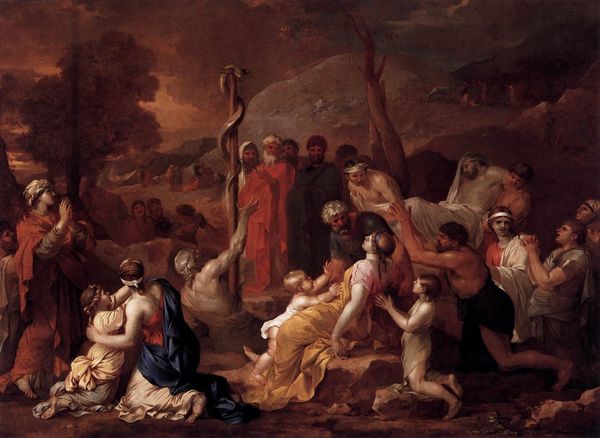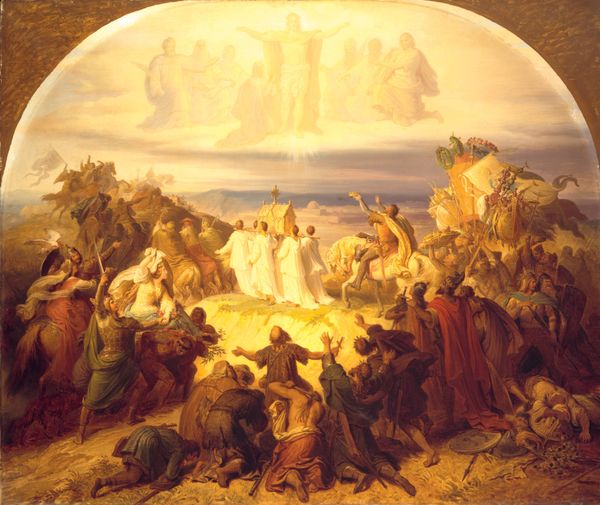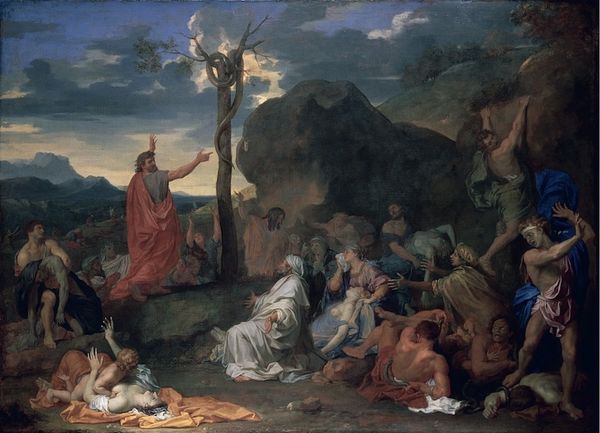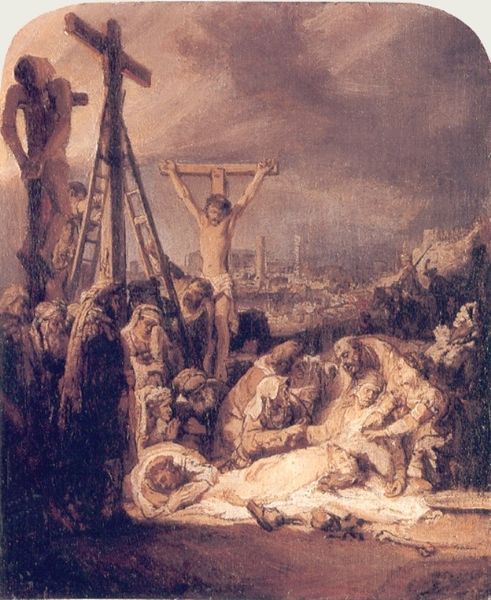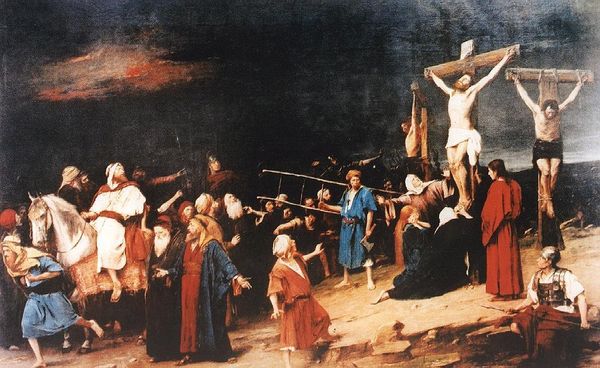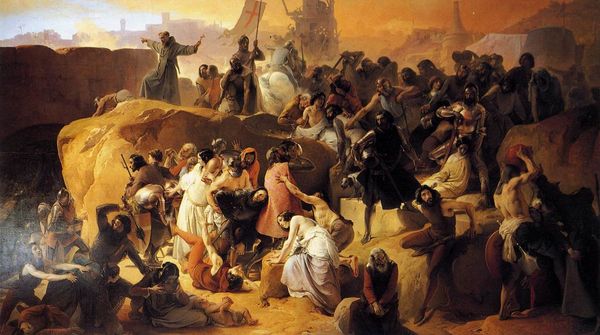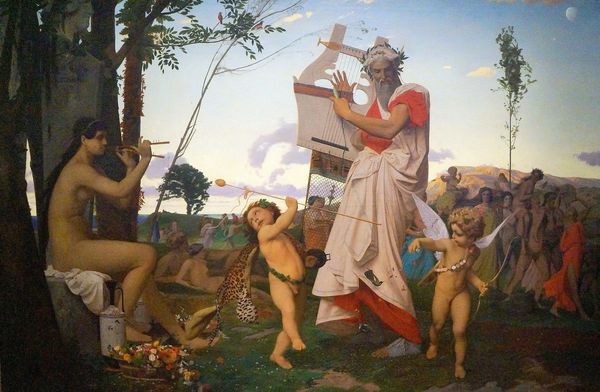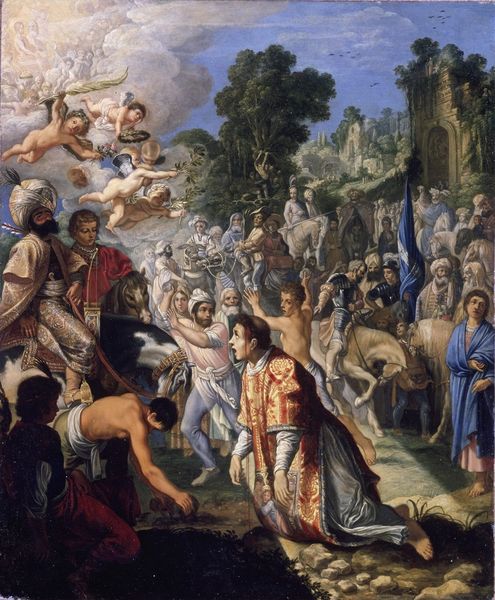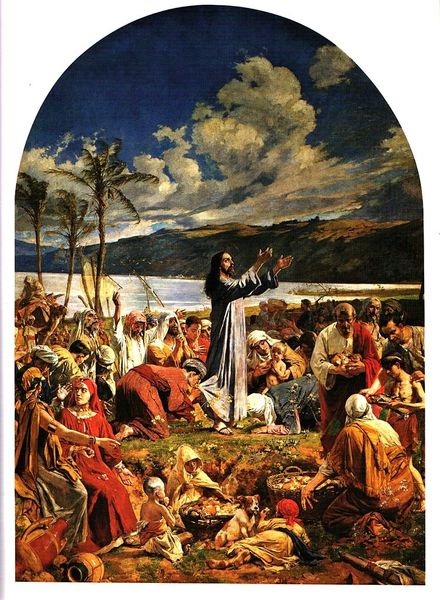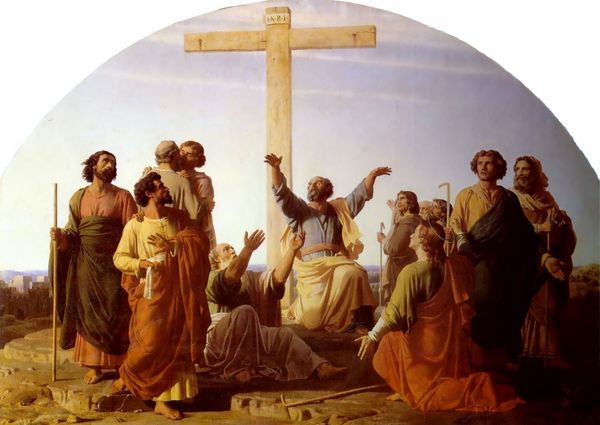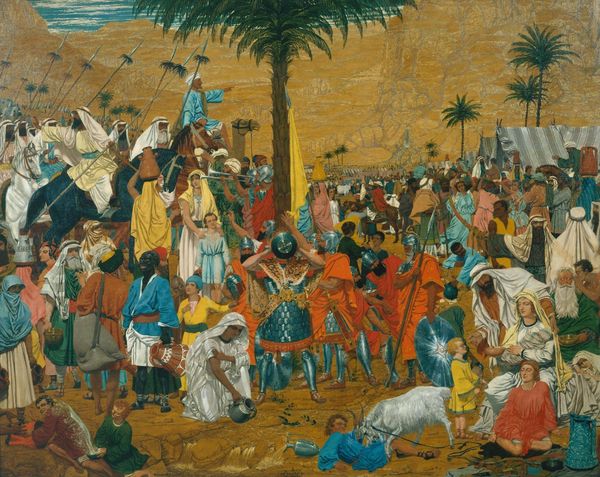
Copyright: Public domain
Editor: Here we have Victor Meirelles' "The First Mass in Brazil," painted in 1861, using oil on canvas. The scale is imposing, and the way Meirelles contrasts the figures—especially the positioning of the Indigenous population versus the Europeans—it strikes me as quite…staged. How do you interpret the composition of this piece? Curator: The painting’s strength lies in its pyramidal structure. Notice how the figures converge towards the altar, drawing the eye upward to the cross. It functions as a clear focal point, acting as the apex. This rigid formal arrangement emphasizes the dominance of the religious ritual being performed. Editor: So, it's a deliberate choice to use that kind of composition? The pyramid isn't accidental? Curator: Precisely. Consider the distribution of light and shadow. The figures closest to the altar are brightly lit, creating a visual hierarchy that emphasizes their importance. Observe the subdued tonality enveloping the Indigenous population further back, placing them in relative obscurity. It invites questions about whose perspectives dominate the narrative. How does that make you feel? Editor: It feels like the painting's prioritizing one group over another, structurally and visually. Is it fair to say Meirelles made a deliberate choice to promote a colonial narrative through formal means? Curator: Indeed. This painting is more than a simple depiction of an historical event; it's a carefully constructed visual argument. Editor: It's fascinating how a seemingly straightforward historical painting contains so many layers just in the composition itself. I’ll definitely look at paintings differently now! Curator: That's the power of formal analysis, offering the possibility to unlock underlying structures in any artwork.
Comments
No comments
Be the first to comment and join the conversation on the ultimate creative platform.
